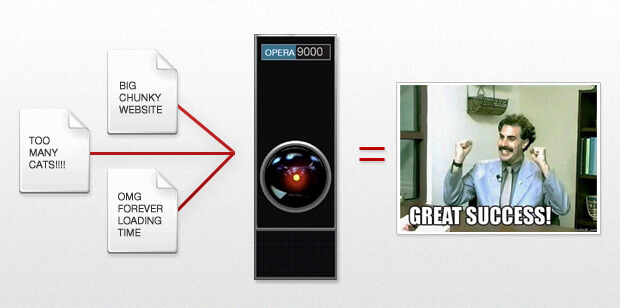Amazon Silk, Yet Another Web Browser

Amazon’s long-awaited tablet/e-reader was formally announced today, and the conversations about whether or not it will compete the iPad are underway. I don’t much care about that. I am far more interested in the web browser that it includes.
Amazon Silk is a new web browser, built on Webkit, and that is really the news of interest here. Add to that Amazon’s super-proxy approach to help users get content more quickly and efficiently and you’ve now got a new pile of potential chaos as a web developer. It’s far too early to tell how this will shake out, but in a client meeting today I already had to address it, so I think it warrants a little context for the current state of browsers so we can consider potential developer impact.
Amazon posted a video on its brand new blog to provide an overview of Silk (with an obligatory Geocities reference):
The 400+ comments raise some questions that tend toward a common theme — in the absence of a technical explanation, when can we get our hands on an emulator? Granted, there are plenty of comments about privacy, security, and some wild speculation, but the theme is clear.
As a web developer, I can tell you that we all feel overburdened with the assault of browsers we have out there already. We can champion the ideal of targeting the specs, not the browser, but when the clients call to complain about a rendering difference, not even a problem, on another browser it can get pretty draining. As Silk comes to market we’ll need to account for it, its hardware configurations, and its coming release versions (within reason, of course).
For some context about the burden we already have, yesterday Google Chrome developer Paul Irish wrote that, only taking into consideration Internet Explorer for desktop, we’re already on track to need to support 76 versions of just Internet Explorer (including version 8) through 2020. There are some broad assumptions in his article regarding how people will use the IE document modes, but the potential is still there. Add to that the new release schedule of many browsers (Firefox has gone from version 5 to 7 in ~90 days), and then pile on the browsers available for mobile devices, and we’re already at well beyond the number of variations of browsers that we had to support even in the heyday of the browser wars.
But Silk isn’t just a web browser — it’s got a super-charged proxy server that will compress images, compile JavaScript into its own machine-readable format, and batch files into a singular, smaller download. While this is nothing new (Opera Mini has done this for some time on mobile devices), Amazon’s implementation raises the hairs on the back of my neck when I think about all the years I’ve had to troubleshoot web applications because proxy servers are caching files, munging JavaScript, brutalizing images, and generally gutting the real-time features that the web had been moving toward more and more. I don’t know if this will happen with Amazon Silk, but given my experience with Opera, proxy servers, and users in general, I am filled with apprehension.
Related
Opera responded to the Amazon Silk announcement with its own explanation of how its own “cloud-compression” technology works:
- Amazon’s Silk Web Browser Adds New Twist to Old Idea at ars technica.
- Amazon Launches Silk Web Browser for Tablets at Mashable.
- Amazon Silk browser spins a faster mobile web, courtesy of cloud servers (video) at Engadget.
- Opera: Amazon’s Silk Browser is Flattering, But Five Years Late at PCMag.
- Amazon’s Silk Browser May Not Be Smooth When It Comes to Privacy at PCWorld.
- Amazon’s Silk browser one-ups Opera’s approach to the Web at InfoWorld.
- The Implications of Amazon’s Silk Web Browser at ReadWriteWeb

Leave a Comment or Response